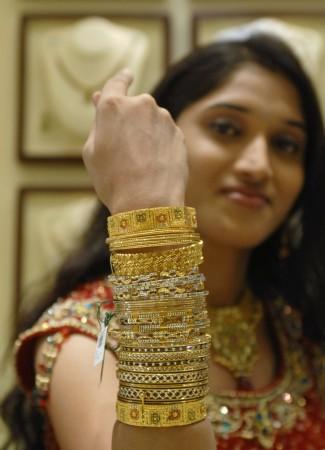
India is poised to pip China as the world's top consumer of gold in 2015 due to reduced demand for gold in the country due to a rally in stocks and India's projected high economic growth.
"We expect both India and China's gold demand to be in the range of 900-1,000 tonne (in 2015), with India slightly higher than China. This is mainly due to the higher economic growth momentum projected in India and China's lack of momentum," said Somasundaram PR, World Gold Council (WGC) Managing Director, India, according to Bloomberg TV.
Gold consumption in India is expected to increase by 23 percent to 1,000 tonne this year if the country registers a gross domestic product (GDP growth) of 7.5-8 percent, according to a report by the World Gold Council.
Demand for gold in China fell by 10 percent in the first quarter this year, as stocks made gold investments less appealing.
Despite a sharp decline in recent sessions, the Chinese stocks still trade at multi-year highs, with a gain of nearly 34% so far this year. The benchmark Shanghai Composite index has increased by around 120 percent over the past one year.
Chinese jewellery buying is currently weighed down by investors' rush to bullish stock markets. Even potential buyers of gold in China are eyeing stock markets and opening stock accounts.
"There's so much money in market now and nowhere to flow to but stocks," Chester Liaw, economist at Forecast Pte in Singapore, told TheStreet.
The Chinese markets are expected to go up further as expectations rise over additional easing measures by the authorities to boost the sluggish economy, which could further reduce demand for gold in the country.
"Investors' core motivations haven't changed. We hope markets go up steadily, not with sharp fluctuations," said Zhao Xijun, deputy finance school dean at Renmin University in Beijing.
Besides, impressive post-listing performance of Chinese initial public offerings (IPOs) has also created frenzy among investors. In the past one year, all the IPOs have generated more than 40% returns on listing.

















